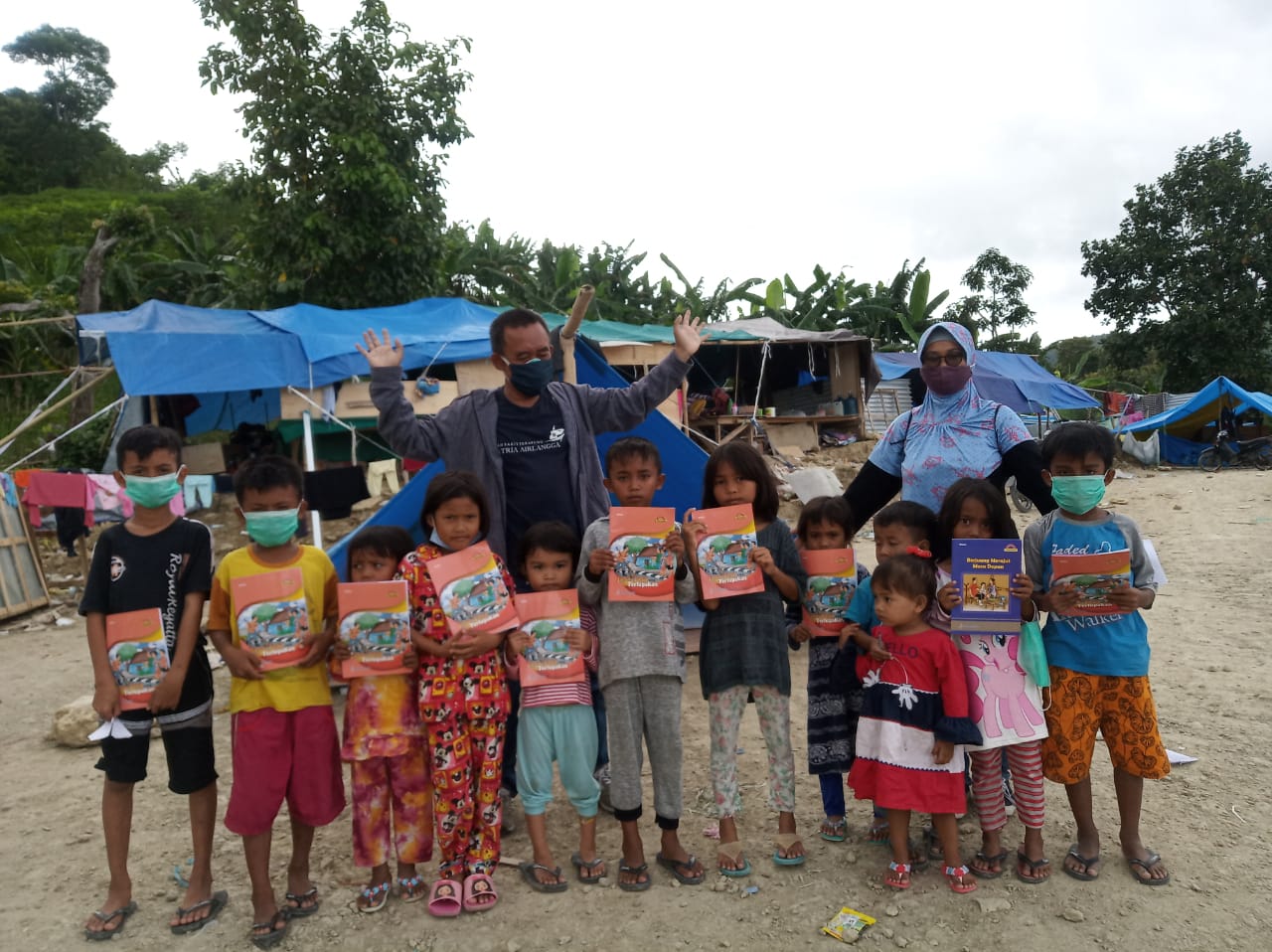UNAIR NEWS – Twelve days after the 6.2 magnitude earthquake shook Mamuju and Majene on Friday morning, January 15, 2021. The National Disaster Management Agency (BNPB) extended the emergency response period by two weeks until Thursday, February 11, 2021.
Based on information from the Meteorology, Climatology and Geophysics Agency (BMKG), around 35 aftershocks occurred until Monday, January 25, 2021, which have affected the victims, especially children. To ensure the psychological condition of the children in the evacuation, a team of volunteers at Ksatria Airlangga Floating Hospital (RSTKA) conducted a trauma healing which was carried out since Monday (25/01/21) in Salutambung Village.
Teguh Wahyu Utomo, one of the volunteers, said that trauma healing activities were carried out in the evacuation areas of Salutambung Village, Malunda Sub-district. The activity was carried out there based on a recommendation from the Salutambung Puskesmas because there were 60 families who did not want to come down from the hill.
The trauma- healing activity which was carried out in the 5 x 5 meter tent belonging to the Pratama Hospital was started by giving fun activity to 23 children. It was given by Afin Murtiningsih S.Psi. as an initial assessment of the psychological trauma experienced by children.
“After the ice breaking activity, Afin gave certain suggestion together by tapping their friend’s shoulder on the right while saying words of reinforcement. Such as ‘ Hi, friends. We must be patient, grateful, and cheerful , ”said the graduate of UNAIR International Relations on Tuesday, January 26, 2021.
After giving suggestion, Teguh began to carry out an initial trauma assessment to find out whether the children were traumatized so that further action can be made.
In assessing the children’s condition, the motivational trainer at MEP Training Center asked the children to write. However, because there were many toddlers, they were asked to draw instead. The children were instructed to draw what they would do after they are allowed to return to their homes.
“If they don’t want to draw, even though they can draw, chances are that he is afraid to go home or traumatic of the earthquake. If they are willing to draw, I see the result and I ask them why they drew it. If what is depicted is unnatural things, then I will follow up with questions to assess how his mental state is, “he said.
The result, he continued, showed that everyone wanted to draw and what were drawn were normal things, for example, drawing children playing at home, oranges, bicycles, and so on. During follow-up, children generally want to return to playing at home and are not afraid to return home.
Apart from being carried out with the children, the trauma-healing activity was also carried out with their parents. But for the parents, the assessment was carried out by having conversation about their condition, while looking at facial expressions and behavior. The assessment was carried out from tent to tent, but not all of them, only sampling from families who were thought unwilling to go down the hill.
With these activities, Teguh hoped that the children will be happy and excited when they have returned to their homes. With such mood, they will be free from mental stress due to an earthquake.
“We hope the authorities lift the emergency status according to the appropriate circumstances. If the emergency condition is lifted, the children can return to normal life in their respective homes. It will be even better if their respective houses have been repaired, “he concluded. (*)
Author: Asthesia Dhea Cantika
Editor : Binti Q. Masruroh





